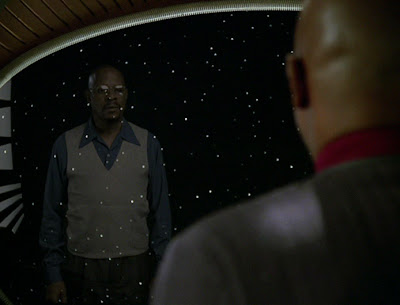
The Dreamer and the Dream: Modeling A Better Future
David Alexander’s biography of Gene Roddenberry, and Majel Roddenberry’s preface to that bio, both emphasize GR as an obsessive and omnivorous reader. Yet there is little direct evidence of what books he read.
Others say he read several Olaf Stapledon novels, a Captain Future novel or two, Arthur C. Clarke’s nonfiction work, Profiles of the Future, etc. But one of the few books Roddenberry himself talked about reading was Days of Our Years, an autobiographical survey of world affairs by journalist and Unitarian minister Pierre van Paassen. Now obscure, it was a best-seller for a few years after it was published in 1939. (Roddenberry remembered reading it when he was 14, but if he read it the year it was published he was actually 18.) “It was the first statement I read about the evils of war and that wars are often manipulated for reasons other than the ones offered,” he later recalled.
Near the end of this book, as war clouds were gathering again that would soon result in World War II, van Paassen utters a kind of cry: “Must it be again? Have the fires of humanity then burned in vain?...Is humanity to make yet another attempt to wipe out its name with its own blood? Is it not all an endless cycle, a horrible wheel of suffering to which we are chained forever?”Those questions were in the air again in the 1960s, and Star Trek can be seen as GR’s way of answering them, by modeling his particular vision of a hopeful, better future, and the changes necessary to achieve it.
There is nothing more essential to the soul of Star Trek than this. It is what distinguishes Star Trek from other science fiction drama. It does not just create a future universe, and populate it with people and stories and visual effects. It models a future by means of the universe and characters it creates, and the stories it tells. It is this aspect of Star Trek more than any other that has touched the hearts and souls of viewers around the world, and now through the generations.
Just as Star Trek stories are often about issues of the present set in the imagined future, the Star Trek universe is a guide not only to the kind of future to which we can aspire, but to our conduct and expectations in the present.
Among the functions of modeling a better future is to provide hope in the bleakest times of the present. Perhaps no story in Star Trek represents this idea better than the Deep Space 9 episode, “Far Beyond the Stars.”
This story about Captain Benjamin Sisko and a science fiction story writer in 1953 named Benny Russell (both played by Avery Brooks) was developed with Marc Scott Zicree by Steven Behr and Hans Beimler, who wrote the screenplay. Avery Brooks directed it, and according to Erdmann and Block’s Deep Space Nine Companion, he was deeply involved in all aspects of the production. He later chose it as his favorite episode for the Captain’s Log DVD collection, calling it one of his proudest moments in his years with Star Trek. It is generally considered one of DS9’s best episodes.
[posts on this episode continue down the page...]
2 comments:
Thank you for the attention you've given to this episode. Its one of the BEST Star Treks ever, and deserves more attention.
Reagards, RobertZ
This is slightly off topic, but may be of interest. Leonard Nimoy will be speaking in Rockville, Maryland on May 18th, 2011, about his life, Star Trek and more. Everyone is invited and please feel free to let your friends know about this event. Ticket prices start at $36 per person, but for $125 per person, you get better seats and a dessert reception with Mr. Nimoy where there may be an opportunity to get a book signed, shake hands, or just say hello (He'll be circulating in the crowd for a while, so no guarantees). For more info or to buy tickets, go to http://www.bnaiisraelcong.org/template.cfm?cid=548
Post a Comment